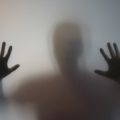Roots of Nightmares in British Folklore
Nightmares have long haunted the British imagination, their origins deeply entwined with ancient folklore and the spiritual beliefs of early island inhabitants. In the mists of antiquity, night terrors were not simply dismissed as bad dreams but regarded as ominous visitations from supernatural beings. Among these, the most notorious was the ‘Night Hag’—an eerie figure said to creep into homes after dark, pressing upon the chests of sleeping victims and stealing their breath. This spectral presence, widely recognised across Britain, was blamed for the sensation of paralysis and suffocation that often accompanies night terrors.
The roots of such beliefs stretch back to both Celtic and Anglo-Saxon traditions, where dreams were seen as messages or warnings from otherworldly realms. The Celts believed that the veil between worlds thinned during sleep, allowing spirits and mischievous fae to intrude upon the vulnerable dreamer. Meanwhile, Anglo-Saxon lore spoke of elves and goblins who could cause ‘elf-shot’—mysterious ailments and disturbing dreams attributed to malevolent nocturnal entities. These folkloric interpretations provided early Britons with a framework for understanding the unexplainable sensations experienced at night, weaving nightmares into the broader tapestry of myth and legend that shaped daily life.
2. Nightmares in Medieval and Tudor England
During the medieval and Tudor periods, nightmares were not simply dismissed as fleeting nocturnal disturbances; rather, they were woven into the very fabric of daily life and belief throughout England. Superstitions and folklore abounded, with many attributing night terrors to supernatural forces or moral failings. The infamous “night hag”—a spectral entity said to sit on a sleeper’s chest—was often blamed for bad dreams, while others believed that nightmares were omens sent by divine or malevolent spirits.
Superstitions Surrounding Nightmares
The English countryside was rife with stories of witches, restless spirits, and demons who could invade dreams. Some believed that eating certain foods before bed, particularly cheese or heavy meats, would attract evil influences or cause unsettling visions. There was also a widespread notion that one’s dreams could be influenced by sleeping position or the phase of the moon.
Common Superstitions and Beliefs
| Superstition | Description |
|---|---|
| Night Hag | A supernatural being believed to suffocate sleepers and bring nightmares. |
| Witchcraft | Nightmares thought to be cast by local witches seeking revenge or mischief. |
| Certain Foods | Eating cheese or rich meals before bed believed to invite bad dreams. |
| Lunar Influence | The full moon considered a time when nightmares were more likely. |
The Role of Dream Interpretation
Dream interpretation was an integral part of medieval English culture. Learned scholars, clergy, and even layfolk would pore over dream-books, such as those attributed to Artemidorus or local wise women, to decipher the hidden meanings behind troubling dreams. Nightmares were rarely viewed in isolation; instead, they were interpreted as messages—warnings of danger, signs of illness, or spiritual admonishments.
Popular Remedies Against Nightmares
To ward off these nocturnal visitations, people employed a variety of remedies rooted in both folk tradition and emerging medical theory. Amulets made from rowan wood, sprigs of rosemary under pillows, recitation of specific prayers before sleep, or hanging protective charms at the bedside were all common practices. Herbal infusions such as valerian root tea were recommended by apothecaries to calm the mind and promote peaceful rest.
| Remedy | Purpose |
|---|---|
| Rowan Amulet | Protection from evil spirits during sleep. |
| Rosemary Under Pillow | Ward off bad dreams and purify the sleeper’s aura. |
| Prayer Recitation | Invoke divine protection against nightmares. |
| Valerian Tea | Soothe anxiety and promote restful sleep. |
A Living Legacy
The beliefs and practices surrounding nightmares in medieval and Tudor England reveal much about the era’s complex relationship with the unseen world. Though modern science has since provided new explanations for our darkest dreams, echoes of these age-old superstitions can still be found in British folklore today—a testament to their enduring influence on how nightmares are understood across generations.

3. Victorian Perspectives on Dreams and Nightmares
The Victorian era marked a profound shift in how nightmares were understood across the United Kingdom. As industrial progress flourished and cities expanded, so too did intellectual curiosity and scientific investigation. No longer confined solely to the realm of superstition or ancient folklore, dreams and nightmares became the subject of serious inquiry among Britain’s thinkers. The burgeoning field of psychology took root, with early pioneers such as Sir James Crichton-Browne and Henry Maudsley exploring the workings of the mind. Their writings suggested that nightmares might not be messages from the spirit world or omens, but rather manifestations of inner turmoil, stress, or illness.
Spiritualism, however, also gained a strong foothold in Victorian society. Séances, table-turning, and attempts to communicate with the departed were popular pursuits among both the working class and the aristocracy. Dreams and nightmares were often interpreted through this lens—as visitations from spirits or glimpses into other realms—especially before scientific theories fully took hold.
Yet, as psychiatry emerged as a legitimate field, attitudes began to change. Nightmares were increasingly seen through a medicalised perspective; they were symptoms to be understood and treated rather than portents to be feared. Institutions such as Bethlem Royal Hospital (famously known as Bedlam) evolved from places of confinement into centres for mental health research. This period saw the publication of influential texts that argued for humane treatment of those suffering from disturbed sleep or troubling dreams.
The interplay between spiritualist beliefs and scientific reasoning created a unique cultural landscape in Victorian Britain. While many still clung to folk interpretations and sought solace in rituals or amulets, others turned to doctors and emerging psychologists for explanations grounded in observation and logic. Thus, the Victorian era stands as a pivotal chapter in Britain’s evolving understanding of nightmares—a time when age-old fears met the dawn of modern science.
4. Modern Scientific Explanations
As the United Kingdom transitioned from a land steeped in myth to one renowned for its scientific innovation, the understanding of nightmares has also evolved considerably. Today, British researchers and clinicians view nightmares through the lens of neuroscience, psychology, and sleep medicine. This modern perspective draws upon decades of research conducted by esteemed institutions such as the University of Oxford and King’s College London, reflecting a blend of rigorous analysis and compassionate care.
Understanding Nightmares: The Role of Sleep Disorders
British sleep specialists recognise that nightmares are often symptomatic of underlying sleep disorders. Conditions such as insomnia, narcolepsy, and sleep apnoea can disrupt regular sleep patterns, increasing the likelihood of disturbing dreams. In clinical settings across the UK, patients presenting with frequent nightmares are frequently assessed for these conditions. The table below highlights some common sleep disorders linked to nightmares:
| Sleep Disorder | Prevalence in UK | Connection to Nightmares |
|---|---|---|
| Insomnia | Approx. 1 in 3 adults | Poor sleep quality increases nightmare frequency |
| Narcolepsy | Rare (about 30,000 people) | Disrupted REM cycles can lead to vivid nightmares |
| Sleep Apnoea | Estimated 1.5 million undiagnosed cases | Fragmented sleep may cause distressing dreams |
The Interplay Between Mental Health and Nightmares
Mental health is a central theme in modern British interpretations of nightmares. Psychologists in the UK acknowledge that stress, anxiety, and trauma are significant contributors to recurring bad dreams. Post-traumatic stress disorder (PTSD), for example, is closely associated with chronic nightmares—a reality faced by many veterans and civilians alike. The NHS provides targeted therapies such as Cognitive Behavioural Therapy for Insomnia (CBT-I), which has shown promise in reducing nightmare frequency by addressing both psychological distress and sleep hygiene.
Neurological Research Across Britain
The scientific community in Britain continues to probe the neurological underpinnings of nightmares. Advanced imaging techniques at leading research centres—such as the MRC Cognition and Brain Sciences Unit in Cambridge—have revealed that heightened activity in the amygdala and disrupted REM sleep cycles play a pivotal role in generating nightmares. British-led studies have also begun exploring genetic factors, suggesting that susceptibility to nightmares may, in part, be inherited.
A Synthesis of Tradition and Science
Together, these modern scientific explanations demonstrate how the UK’s approach to nightmares has matured over time. While folklore once offered solace or warning, today’s Britons benefit from evidence-based treatments grounded in ongoing research. Yet even as science advances, there remains an enduring respect for the personal meaning behind each dream—a testament to the nation’s unique blend of tradition and progress.
5. Cultural Attitudes and Popular Media Today
In contemporary UK society, nightmares are no longer merely dismissed as the remnants of a bad supper or the work of mischief-making spirits. Instead, they are acknowledged as a genuine facet of mental health and emotional wellbeing. Today’s Britons, shaped by a legacy of folklore yet firmly rooted in scientific understanding, often discuss nightmares openly, recognising them as signals from the subconscious rather than omens or portents.
Nightmares in Public Discourse
Public conversations around nightmares frequently surface in media campaigns that focus on sleep hygiene and mental health awareness. The NHS and prominent charities such as Mind have brought nightmares into the wider dialogue about stress, trauma, and anxiety. This reflects an empathetic shift in cultural attitudes: rather than stigmatising those who experience frequent nightmares, there is an emphasis on support and practical guidance.
Depictions in British Literature
The literary landscape of the UK has long woven nightmares into its fabric. From Shakespeare’s haunted characters to the gothic visions of Mary Shelley and contemporary authors like Ian McEwan, nightmares often serve as powerful metaphors for inner turmoil and societal anxieties. Modern fiction continues this tradition, exploring themes such as identity, grief, and fear through unsettling dream sequences that resonate with readers’ own experiences.
Television and Popular Culture
British television too, from psychological dramas like “Black Mirror” to children’s programming addressing bedtime fears, portrays nightmares both as personal struggles and collective experiences. Documentaries have explored the science behind dreams, while popular talk shows occasionally invite sleep experts to demystify the phenomena for viewers at home. In these portrayals, nightmares are given context—as both a relatable human challenge and an opportunity for growth or reflection.
This open engagement with nightmares in literature, television, and public conversation highlights a nuanced view within modern UK culture—one that honours traditional wisdom but embraces compassionate understanding grounded in science. The British approach today is one of curiosity and support, fostering a society where even our darkest dreams can be spoken about without fear or shame.
6. Remedies and Coping Strategies in the UK
Across centuries, Britons have sought solace from nightmares through a blend of tradition and innovation. In many households, time-honoured folk remedies still find their place; lavender sachets under pillows, warm mugs of chamomile tea before bed, or even the old custom of placing an iron object by the bedside to ward off evil spirits. These rituals, passed down through generations, echo the belief that simple, natural interventions can shield one’s sleep from nocturnal disturbances.
Yet, as our understanding of sleep deepens, so too does our approach to managing nightmares. Today, the NHS offers practical guidance rooted in science: maintaining a regular sleep schedule, ensuring a calming bedtime routine, and creating a restful environment are all widely recommended. For those troubled by persistent nightmares, general practitioners may suggest cognitive behavioural therapy (CBT), which has proven effective in addressing underlying anxieties or traumas contributing to distressing dreams.
British therapists and sleep clinics also provide specialised treatments such as imagery rehearsal therapy—a method where individuals consciously reshape the narrative of their recurring nightmares while awake. Mindfulness techniques and relaxation exercises further empower sufferers to regain control over their dreamscapes. Communities across the UK increasingly recognise the importance of mental health support groups, both online and face-to-face, offering shared experiences and collective wisdom for those navigating the shadows of the night.
From rural cottages adorned with herbal amulets to modern clinics employing cutting-edge psychological therapies, the UK’s approach to nightmares reflects a unique fusion of its folkloric roots and progressive medical insight. By embracing both heritage and innovation, Britons continue to seek peace beneath their patchwork skies—restoring balance between ancient fears and contemporary hope.


